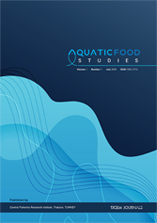Horticultural Studies (HortiS)
2007, Vol 24, Num, 2 (Pages: 27-33)
RESPONSES OF SOME FRAGARIA CHILOENSIS GENOTYPES TO THE VARIOUS SALT (NaCl) CONCENTRATIONS DURING IN VITRO PROPAGATION
2 Çukurova Üniversitesi, Ziraat Fakültesi, Bahçe Bitkileri Bölümü, Adana
3 Mustafa Kemal Üniversitesi, Ziraat Fakültesi, Bahçe Bitkileri Bölümü, Antakya
4 Toros Agripark Laboratuarları, Adana Viewed : 3181 - Downloaded : 1577 Cultivated strawberry (Fragaria ×ananassa) is the natural hybrid of two species from South (F. chiloensis) and North America (F. virginiana). The parental species usually have broader diversity when compared to the F. ×ananassa. Cultivated strawberry is known as a salt-sensitive species while the salt response of the F. chiloensis has not been tested experimentally. Therefore, it is important to test parental strawberry species F. chiloensis for salt tolerance to recover salt-tolerant strawberry genotypes. The response of four F. chiloensis (2 TAB 4B, CFRA 1267, HM1 and Scotts Creek) from super-core collection to the various NaCl concentrations (0, 25, 50, 75 and 100 mM) under in vitro conditions was tested. At the end of 45-day culture, several variables were collected including multiplication rate, dry weight and concentrations of some nutrient-elements (K, Ca, Mg, Na). The results indicated that high NaCl concentrations decrease the multiplication rate and affect dry weight and Ca and Na concentrations. The highest plant Na concentrations were obtained from 75 and 100 mM NaCl treatments, and the highest Ca concentrations were obtained from 0 and 25 mM NaCl treatments. In general, the dry weights of the genotypes, as well as K/Na and Ca/Na ratios decreased as the NaCl concentrations increased; the lowest decrease were observed in HM1. Our results indicated that tissue culture can be used as fast and efficient tool to screen responses of strawberry to the high salt concentrations. Keywords : Strawberry, Tissue culture, Fragaria ×ananassa, Stress, Salt














